You say chickpea, I say garbanzo bean
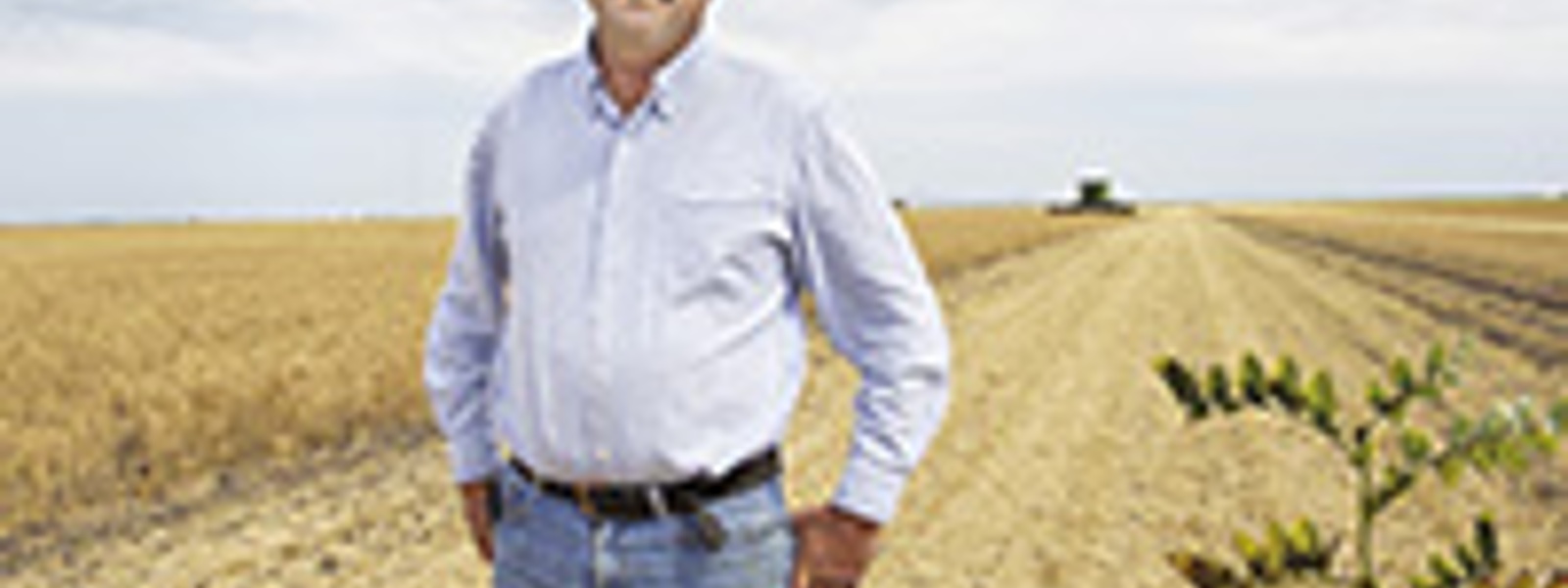
![]() More online: Going gonzo for garbanzos
More online: Going gonzo for garbanzos
If you want a taste of history, crack open a can of garbanzo beans.
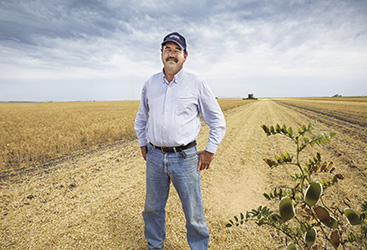
Farmers such as David Richter harvest garbanzo beans after the plants are dried and brown in the field. The plant to the right is nearly ready, with some beans not completely brown.
The ancient legume, also known as chickpeas, has been widely grown in the Mediterranean, Middle East, India and parts of Africa for more than 7,000 years and is a dietary staple for different cultures around the world.
For many Americans, the little tan nuggets are perhaps most often encountered at the salad bar next to the croutons. Now, with the popularity of the Mediterranean diet and Middle Eastern cuisine, garbanzo beans are increasingly eaten as hummus, a dip or spread made by blending cooked, mashed garbanzos with olive oil, lemon juice, garlic and tahini, or sesame paste.
The word "hummus" actually means "chickpea" in Arabic, but the dish is so old that there's debate about its origin, with Greeks, Egyptians, Arabs and Israelis claiming it's their recipe.
A water-wise crop
America's growing appetite for hummus—and scores of other once-exotic ways to eat the high-protein, high-fiber legume—has not been lost on farmers, who've seen demand for garbanzo beans rise in recent years.
For farmer David Richter, who grows a variety of crops in Sutter County, raising garbanzo beans makes sense during tight water years because the crop is drought-tolerant and could thrive off seasonal rainfall for much of its irrigation.
"Once you get the ground fairly wet, it'll make it," he said.
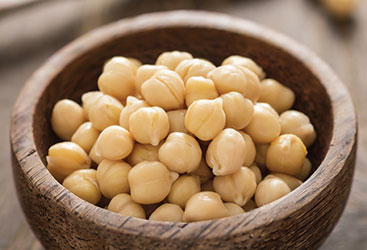
Garbanzos are usually harvested for their dry seeds, or beans, which are nonperishable. To do this, Richter waits until the plants are fully mature and then stops watering them, allowing the plants to dry out and turn brown. When the crop is ready to be picked, a harvester runs through his field, swallowing the plants whole, and then spits out the stems and leaves. At the same time, it threshes the pods to extract the actual beans inside.
While some California garbanzo beans are sold to make store-bought hummus, the majority are used for canning. Only split and small-sized beans that didn't make the grade end up as hummus or ground to make garbanzo flour, which is popular in Middle Eastern and Indian cooking and as a gluten-free substitute for wheat flour, said Nathan Sano, manager of the California Dry Bean Advisory Board. States such as Washington and Idaho—the nation's two largest producers of garbanzo beans—grow the small-bean varieties used by hummus companies such as Sabra.
Canneries tend to favor California garbanzos for their larger sizes and high quality, said Gary Luckett, manager of Cal-Bean and Grain Cooperative in Tulare County, which cleans and sizes the beans before they are sold.
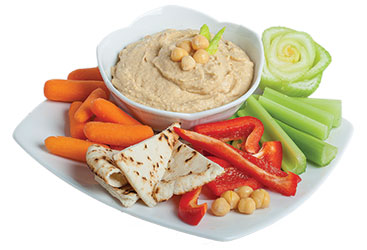
A salad-bar staple, the cooked beans are also popular in hummus.
Because very few California canneries process garbanzos, most of the state's crop is shipped to facilities on the East Coast. From there, the dry beans are cooked, canned and ready for eating.
Why garbanzos?
Although garbanzo beans are the largest legume crop grown in the world, U.S. farmers didn't grow many of them before the 1990s, when California garbanzo production hit its boom. At that time, the state was going through a dry period and farmers were looking for less water-intensive crops to grow, Luckett said.
"(Garbanzo beans) were grown when water was short in drought conditions," he said. "They could be farmed on a lot less water than many other crops."
After the 1990s, California farmers started planting more tree crops such as almonds and pistachios, devoting less acreage to garbanzo beans. Meanwhile, garbanzo production grew in Washington, Idaho, North Dakota and Montana, as well as in Canada.
"But still, we do produce garbanzos here in the state," Luckett said of the legume prized for its creamy texture and nutty flavor.
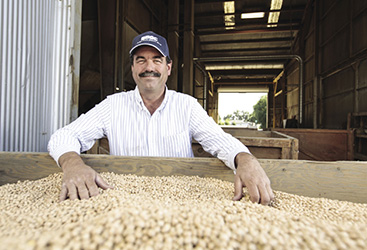
Richter shows a bin of dry garbanzo beans destined for canning.
Like most farmers, Richter grows garbanzo beans as part of a regular rotation in his planting schedule. He might plant processing tomatoes after the beans, or he might rotate garbanzos with rice, corn, sunflowers and sorghum. Farmers rotate crops for the health of the soil. Planting legumes also helps to refresh the soil because the plants make nitrogen naturally, replacing the need for fertilizer.
Ching Lee
clee@californiabountiful.com
Going green
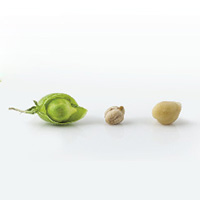
The three stages, from left: green garbanzos, the dry bean and cooked from a can.
Most people are familiar with the yellowish-tan version of the garbanzo bean—either soft and cooked from a can or hard and dried, usually bought in bulk.
But garbanzo beans start out green in the field, just like green beans—and they are also available in the market that way: as fresh garbanzos picked when the pods are still green. The concept is similar to edamame, or fresh soybeans.
Already popular in other parts of the world, including Mexico, the Middle East and India, fresh garbanzos are crunchier than their canned brethren but just as versatile. They can be eaten straight out of their soft pods, boiled, roasted, sautéed and incorporated into any number of dishes—even made into green hummus. Look for them in the fresh produce aisle.

